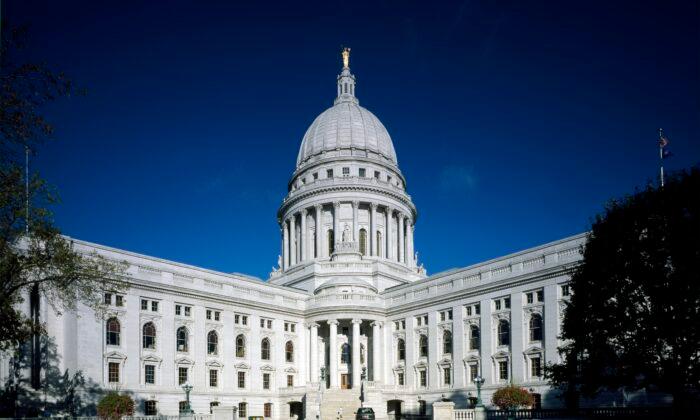Wisconsin voters will have a chance to weigh in on whether they support a look-for-work requirement for able-bodied childless applicants in order for them to collect welfare checks.
The Republican-controlled legislative assembly recently voted along party lines to approve a resolution that adds an advisory referendum to the upcoming April election ballot.
The advisory referendum question is not legally binding and so would not impose a work requirement law in order to qualify for welfare. It would, however, send a signal to legislators about voters’ views and priorities on the matter.
“It’s an opportunity for the business community and hardworking citizens to voice their opinion on able-bodied childless adults receiving welfare for an extended period without looking for work,” Assembly Speaker Robin Vos, a Republican, said in a statement.
“With 101,963 unfilled jobs in WI right now, no one should be sitting on the sidelines,” he added.
The advisory question on the ballot comes amid low nationwide workforce participation, with many Americans continuing to receive COVID-19-related public assistance while employers face challenges in filling job positions.
In recent years, legislators in a number of states have proposed or enacted measures that would require people who receive welfare benefits to look for work as a condition of eligibility. While they vary by state, the measures generally require able-bodied recipients to take part in job training, job search activities, or other programs designed to bring recipients into the workforce.
Besides being a way to help fill job vacancies, such measures also encourage self-sufficiency and reduce dependency on government benefits, supporters typically argue.
Opponents of look-for-work requirements often say that such measures don’t address the root causes of poverty and create barriers to essential benefits.
“Many economists have been scratching their heads, wondering why so many workers are sitting on the sidelines today, despite four-decade-high inflation and the resulting record-high number of unfilled job openings,” wrote E.J. Antoni, a research fellow at the Heritage Foundation.
“The expansion of welfare benefits—both in terms of eligibility and size of benefits—has provided a substantial disincentive to working. Businesses must not only compete against one another for workers, but against the dole as well,” he wrote.
Job Openings Jump
The number of job vacancies as of the last day of December soared to just over 11 million, up from 10.5 million the prior month and beating forecasts, the latest data from the Bureau of Labor Statistics (BLS) shows. Economists polled by Reuters predicted 10.250 million job openings.Blue-collar jobs led the way in worker demand with openings in accommodation and food services rising by 409,000 for the month. But while most sectors had more jobs on offer in December, vacancies in the “Information” sector, which include tech and social media companies, crashed from 216,000 to 109,000.
Layoffs Rise
In a sign that softer economic conditions like lower consumer demand are starting to impact the labor market, a new Feb. 2 report from employment firm Challenger, Gray & Christmas shows that layoffs in the United States hit a more than two-year high in January.“We’re now on the other side of the hiring frenzy of the pandemic years,” Andrew Challenger, labor expert and senior vice president of the employment firm, said in a statement.
The report shows that layoffs impacted 102,943 workers. That’s a more than two-fold jump from December and an over five-times surge from a year earlier.
Technology firms cut jobs at the second-highest pace on record to brace for a possible recession, according to the report.
“Companies are preparing for an economic slowdown, cutting workforce and slowing hiring,” Challenger said.
Some experts urge caution when it comes to jumping to conclusions about the broader health of the tech sector or the U.S. economy from the recent wave of layoffs.
“Microsoft laid off 10,000 people, but they had hired 40,000 in the previous year, so we are not seeing a major pullback into the pre-pandemic base numbers,” Lee Vinsel, a professor in the Department of Science, Technology and Society at Virginia Tech University in Blacksburg, Virginia, told The Epoch Times in a recent interview.
“Now, that might come. We’ll have to see. A lot of what’s driving this at Facebook, Google, and other firms is that there’s been some economic downturn at the end of 2022, and that has led to a decline in spending on advertising,” he said.
Part of what’s driving the layoffs is that the era of cheap money that flooded the tech sector has ground to a halt as the Federal Reserve hiked rates aggressively in the face of soaring inflation.
“I think that a lot of what drove the exuberance was the cheap and easy money floating around, which was put into bad ideas that were not profitable, and as soon as the Federal Reserve started jacking up interest rates, it injected a level of sobriety into the industry. They are starting to wake up and face the reality,” Vinsel said.
The Fed on Wednesday delivered a smaller 25 basis point rate hike, bringing the policy rate to between 4.50 percent and 4.75 percent, the highest since 2007.
While Fed Chair Jerome Powell said the central bank had turned a key corner in its fight against soaring prices, a “victory” would require the benchmark interest rate to rise further and stay elevated at least through 2023.





